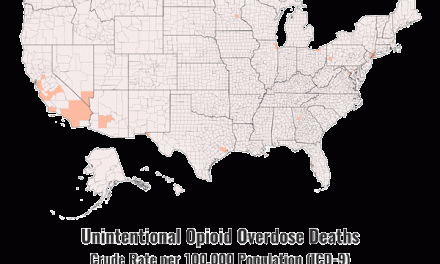It seems increasingly likely that the final death toll from COVID-19, once it is known, will turn out to be far higher than the numbers we hear bandied about currently. That’s what happened with opioid fatality counts. History repeats, no?
The real death toll from the pandemic in America may already be 300,000
Of course, the opioid epidemic is still in progress. In fact, signs are that it’s growing worse. “Surging” is the popular term. Not that you’d know it from the way it’s (not) being covered in the press.
In mid-March, when we were just beginning to appreciate what a mess this pandemic would be, I wrote:
“I can’t help wondering if we’ll have similar difficulties [with undercounting] the coronavirus…. The best estimate I’ve seen is 400,000 opioid-related deaths since 2000 – 25% of those in just the past six years.”
Six years seemed like a speeding train back then. Now it sounds practically pokey. As one expert observed, COVID-19 has always been more wildfire than wave.
It gives new meaning to the term ‘opportunistic’.
Of course, this is actually just one of a number of major respiratory pandemics since the 1950’s. Asian Flu and Swine Flu, to name two. Blood- and fluid- borne pathogens like HIV and Ebola occupied our attention during the breaks.
What makes this latest threat different? According to Dr. Fauci, it’s a combination of traits long feared among scientists: a “brand new respiratory-borne viral illness with both a significant degree of transmissibility and mortality….”
Where ebola remained “a highly lethal local disease”, and HIV was “drawn out over an extended period…” COVID is not. So while “the entire world never felt threatened” by the other pandemics, now it does– and has, from the outset.
Anyway, undercounting is once again a problem. Factors that contribute, then and now:
Limited resources. As with the opioid epidemic, the ability to accurately track cases varied wildly from community to community. We’re probably fortunate that the ACA wasn’t repealed — if it had been, our dilemma could be far worse than it is.
That Coroner issue. Smaller jurisdictions and rural areas leave decisions to a Coroner who is probably not a trained physician. Instead, it’s a political office that doesn’t require much in-depth knowledge. As a result, broad categories such as heart disease can get the blame while other factors, such as COVID, are neglected.
Stigma— I doubt any civic leader wants their community to be known as a disease ‘hot spot’. Remember that moment in Jaws when Richard Dreyfuss declares, in disgust, that “this was no boating accident!” Well, this was never your ordinary illness. In the same sense, the opioid epidemic was never going to stay confined to urban environments. Soon enough it had spread to the countryside.
And like the pandemic, hit especially hard among minorities and the disadvantaged.
Isn’t that usually the way?













